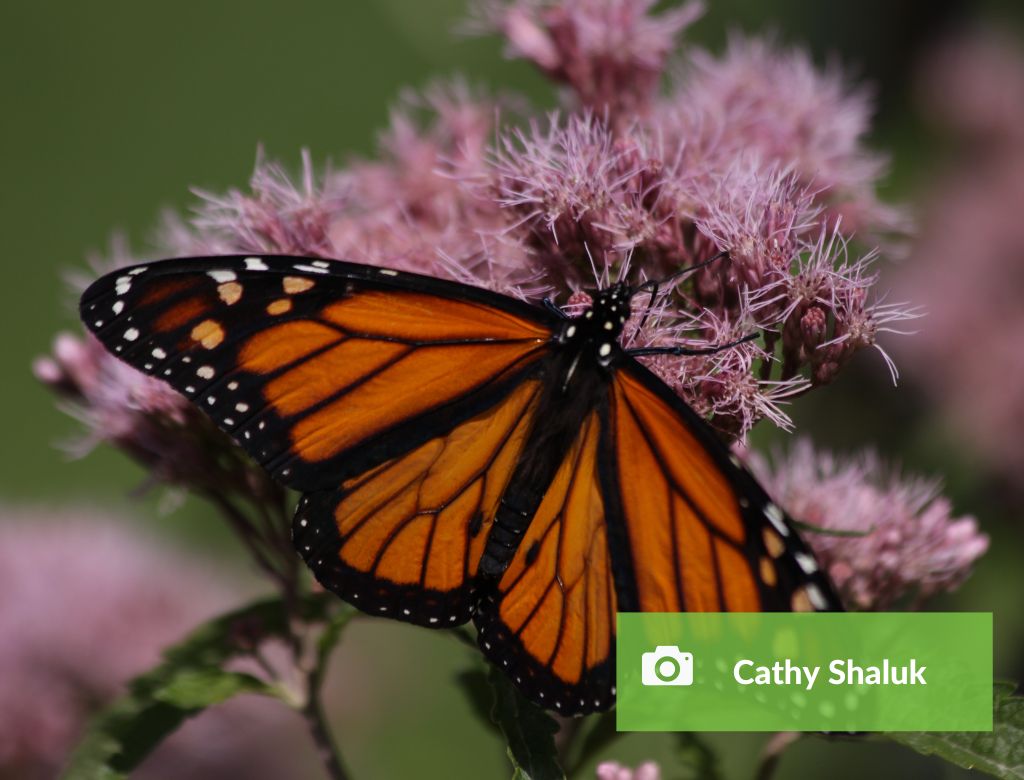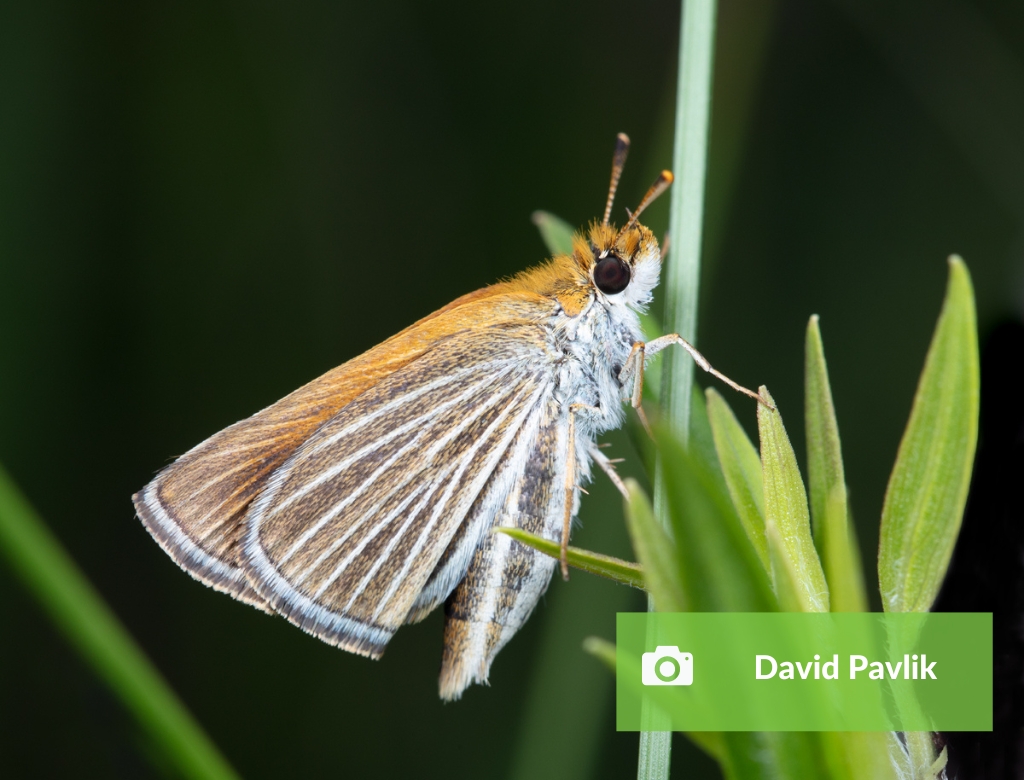
Monarch
Identification
The monarch butterfly undergoes four distinct phases in its life cycle that greatly change its appearance: egg, larva (caterpillar), pupa and adult. Most commonly observed as an adult, the monarch is bright orange with black lacing and white dots on its wings. The body is black with white markings. Its bright colour warns predators that the monarch is poisonous to eat.
Habitat
Monarchs are adaptable to a variety of habitats wherever common milkweed, and to a lesser extent swamp milkweed and showy milkweed, are present. Milkweed is the only plant eaten by the larvae so monarchs rely heavily on it. Weather plays a key role in the monarch’s survival as well, not only during migration but also during the breeding season; if it is unstable their numbers may decline. The biggest concern of the eastern population is deforestation in Mexico’s oyamel fir forests that support close to 99% of the total over wintering population.

Poweshiek Skipperling
Identification
The Poweshiek skipperling is a small butterfly no bigger than a loonie in size. They are brown and orange in colour, with distinct silver coloured veins running through the underside of their hind wings. Their flight pattern has a characteristic skipping movement. Only a handful of experts in the world can properly identify Poweshiek skipperlings from other members of the
skipper family.
Habitat
In Manitoba, Poweshiek skipperlings are dependent on tall-grass prairie habitat which is concerning due to its status as an endangered ecosystem. For Poweshiek skipperlings, it is important to have an abundance of larval host plants and native nectar plants, usually found in the transition zone from wetland to drier upland areas. This is where they like to feed on their favourite flower, the black-eyed susan. With a critically low global population, estimated at fewer than 500, genetic diversity is a concern for this species.
